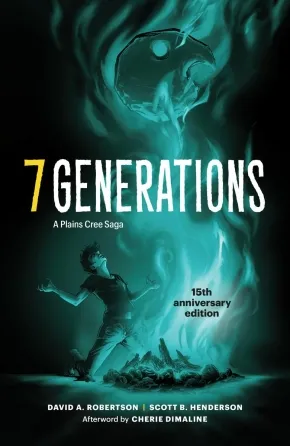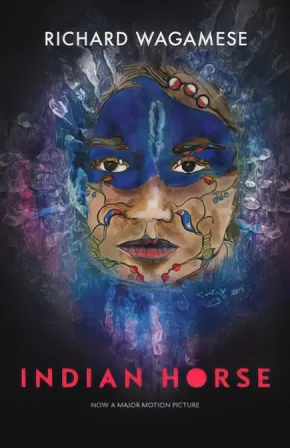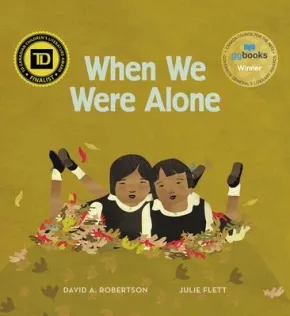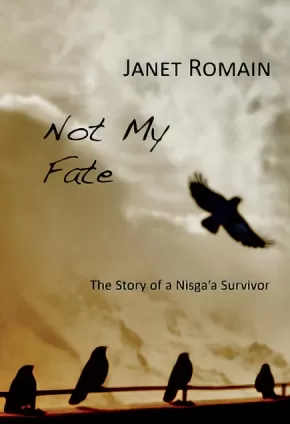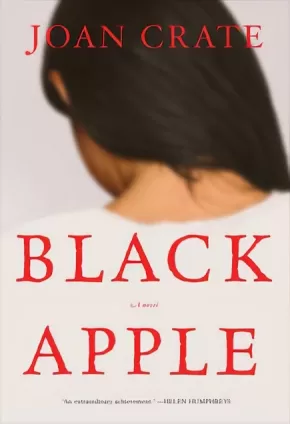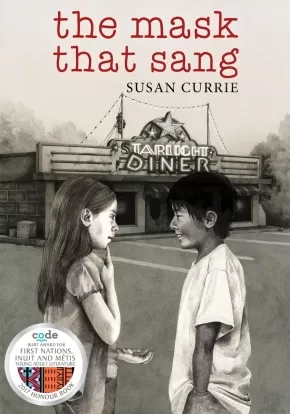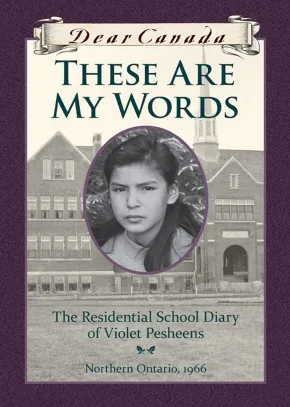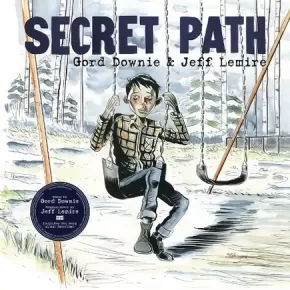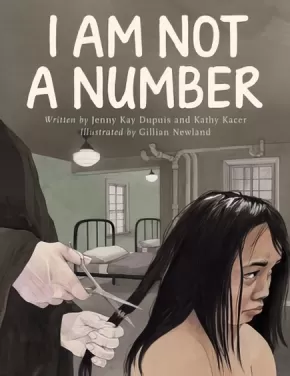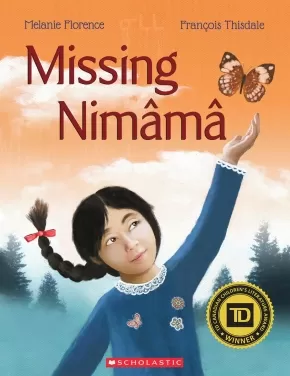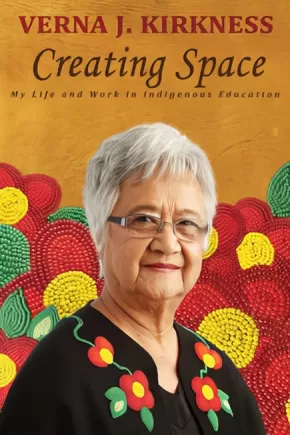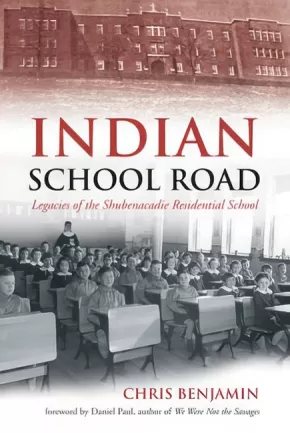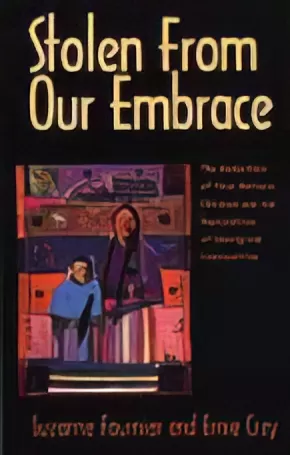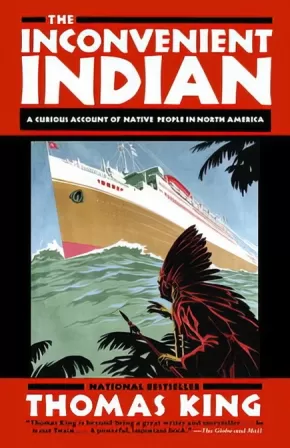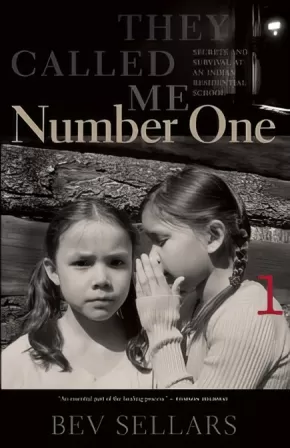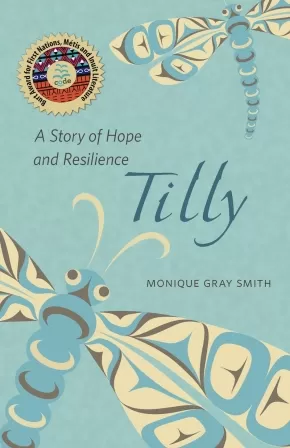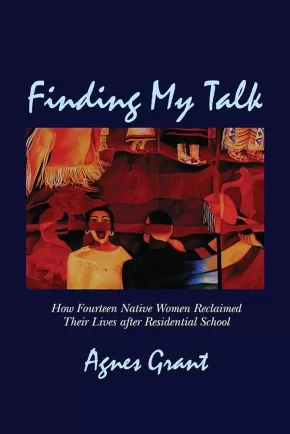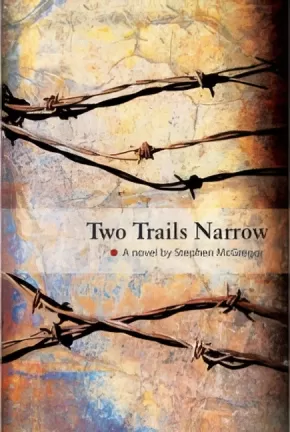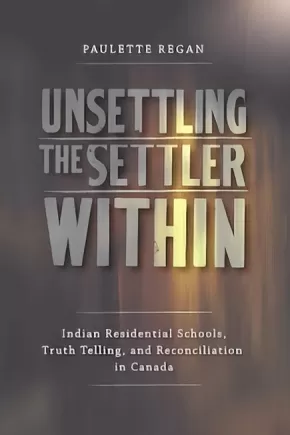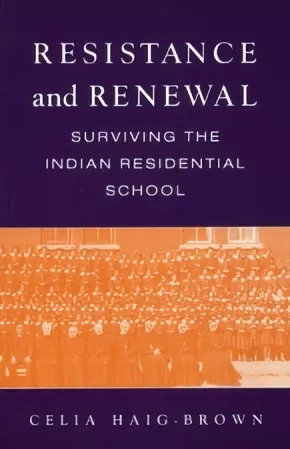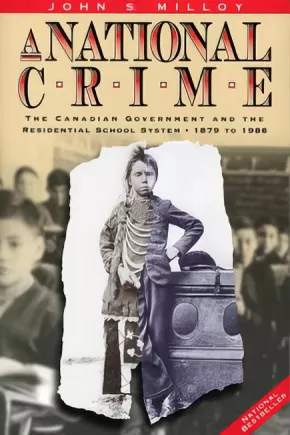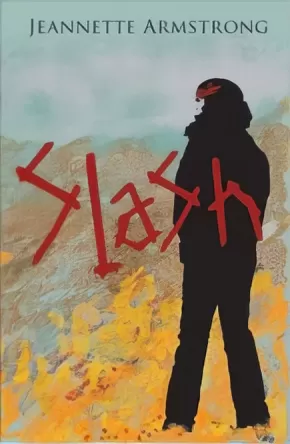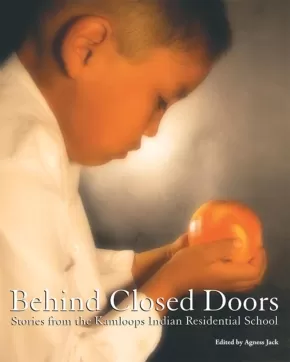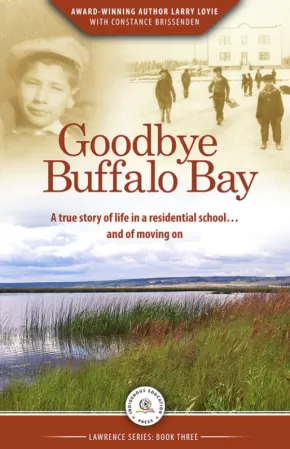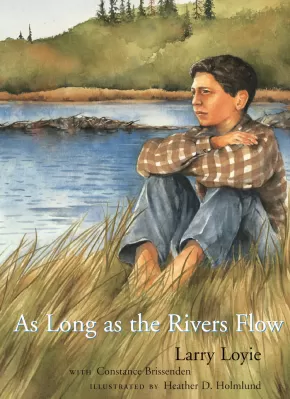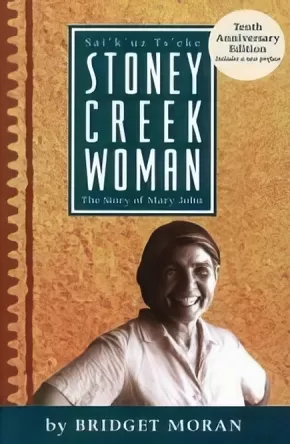
Indian Residential Schools and Reconciliation Teacher Resource Guide Social Studies 10
1
-
15
of
31 Results;
Sort By
Go To
of 3
These learning resources are designed to help Grade Ten students attain an understanding of the history of the relationship between Indigenous and non-Indigenous people over Canada’s history. They are for the instruction of youth from all cultural backgrounds, not just Indigenous students.
While the instructional activities are presented in a structured format, they are intended to be flexible in their use. They allow for the application of both a First Peoples Pedagogy and the changing BC Curriculum.
The activities are designed to be adaptable and flexible. Teachers can follow the sequence of lessons, they can use particular lessons or sections as stand-alone activities, or they can adapt the activities to meet their own curriculum planning requirements and the learning needs of their students.
Visit the FNESC web site to download or order a hard copy.
7 Generations: A Plains Cree Saga: 15th Anniversary Edition
$36.99
Artists:
Format:
Paperback
Text Content Territories:
Indigenous Canadian; First Nations; Cree (Nehiyawak); Plains Cree;
ISBN / Barcode: 9781774920619
Synopsis:
Synopsis:
From the bestselling author of The Misewa Saga and When We Were Alone, comes 7 Generations: A Plains Cree Saga. This epic series of young adult graphic novels follows one Cree family over three centuries and seven generations.
Edwin, a Cree teenage boy, is struggling to feel connected to his family and his identity. From stories shared by his mother, Edwin learns about the history of his family, through the years of war, a smallpox epidemic, and residential schools, all the way through to the present and the conflicts Edwin faces in his own life.
Edwin must confront the past to heal in the present—but can his father, scarred by his own residential school experience, heal in time to help Edwin?
This special 15th anniversary edition brings together all four titles in the 7 Generations series, recoloured and relettered, with a preface from author David A. Robertson and an afterword from bestselling author Cherie Dimaline.
Educator Information
Recommended for ages 15 to 18.
Includes the stories in the 7 Generations series.
Stone introduces Edwin, a young man who must discover his family’s past if he is to have any future. Edwin learns of his ancestor Stone, a young Plains Cree man, who came of age in the early 19th century. When his older brother is tragically killed during a Blackfoot raid, Stone, the best shot and rider in his encampment, must overcome his grief to avenge his brother’s death.
In Scars, the story of White Cloud, Edwin's ancestor, is set against the smallpox epidemic of 1870-1871. After witnessing the death of his family one by one, White Cloud must summon the strength to find a new home and deliver himself from the terrible disease.
In Ends/Begins, readers learn about the story of Edwin’s father, and his experiences in a residential school. In 1964, two brothers are taken from the warm and loving care of their grandparents, and spirited away to a residential school. When older brother James discovers the anguish that his brother is living under, it leads to unspeakable tragedy.
In The Pact, the guilt and loss of James’s residential school experiences follow him into adulthood, and his life spirals out of control. Edwin, mired in his own pain, tries to navigate past the desolation of his fatherless childhood. As James tries to heal himself he begins to realize that, somehow, he must save his son’s life—as well as his own. When father and son finally meet, can they heal their shattered relationship, and themselves, or will it be too late?
Additional Information
144 pages | 6.50" x 10.00" | Paperback
First Nations 101: Tons of Stuff You Need to Know - 2nd Edition
$23.00
Format:
Paperback
Text Content Territories:
Indigenous Canadian; First Nations;
ISBN / Barcode: 978-0-9869640-1-5
Synopsis:
Synopsis:
Updated and expanded 2nd edition of the national best seller!
First Nations 101 provides a broad overview of the day-to-day lives of Indigenous people, traditional Indigenous communities, colonial interventions used in an attempt to assimilate Indigenous people into mainstream society, the impacts those interventions had on Indigenous families and communities, and how Indigenous people are working towards holistic health and wellness today.
This 2nd edition has over 75 chapters, including new ones on rematriation, water for life, governance ‘options’, Indigenous feminisms, decolonization, (mis)appropriation, Indigenous Knowledge, and how to become a great ally.
Educator Information
Author Lynda Gray’s accessible writing style makes First Nations 101 the perfect primer for all to read. She notes that although governments may encourage and fund reconciliation activities, true reconciliation can only happen through the ongoing commitment and consistent actions of individuals, groups, organizations, governments, and businesses.
$1 from each book sold will be donated to the Ts’msyen Revolution Fund which Lynda Gray and her children, Dr. Robin Gray and artist Phil Gray, started in 2022. The Fund will help support Ts’msyen language and culture revitalization in laxyuubm Ts’msyen (Ts’msyen territory).
Lynda Gray is member of the Ts’msyen Nation from Lax Kw’alaams on the Northwest Coast of B.C. The book’s cover art was created by her son Phil Gray and features a 'neełx (killerwhale) to represent the author and her children’s clan (Gisbutwada).
The 2nd edition has over 75 chapters, with 16 new ones including rematriation, what is reconciliation, traditional economies, water for life, Indigenous feminisms, (mis)appropriation, economic development, Indigenous Knowledge, how to become a great ally, and more.
Additional Information
336 Pages | Updated and expanded 2nd edition
Indian Horse (Special Edition)
$21.95
Format:
Paperback
Text Content Territories:
Indigenous Canadian; First Nations; Anishinaabeg; Ojibway;
ISBN / Barcode: 9781771621908
Synopsis:
Synopsis:
Saul Indian Horse has hit bottom. His last binge almost killed him, and now he’s a reluctant resident in a treatment centre for alcoholics, surrounded by people he’s sure will never understand him. But Saul wants peace, and he grudgingly comes to see that he’ll find it only through telling his story. With him, readers embark on a journey back through the life he’s led as a northern Ojibway, with all its joys and sorrows.
With compassion and insight, author Richard Wagamese traces through his fictional characters the decline of a culture and a cultural way. For Saul, taken forcibly from the land and his family when he’s sent to residential school, salvation comes for a while through his incredible gifts as a hockey player. But in the harsh realities of 1960s Canada, he battles obdurate racism and the spirit-destroying effects of cultural alienation and displacement. Indian Horse unfolds against the bleak loveliness of northern Ontario, all rock, marsh, bog and cedar. Wagamese writes with a spare beauty, penetrating the heart of a remarkable Ojibway man.
Awards
- 2013 Burt Award for First Nations, Métis, and Inuit Literature
- 2013 First Nation Communities Read Award
Reviews
"Richard Wagamese is a master storyteller, who blends the throb of life with spiritual links to the land, hard work, and culture to find success, his words take you into the soul of Indian Horse, to experience his pain, his growing resentments, his depression, and his fear which has to be faced if he is to regain the joy of life. This book is meant for youth, adults, and elders, to be shared, to be lived, and to be treasured for the clear message of hope and the need to go the distance." — Wawatay News
“…The hockey chapters are compelling; they evoke Sherman Alexie’s fiction that examines contemporary life on American Indian reservations through the lens of basketball. But it is as a story of reconciliation that this novel reveals Wagamese’s masterful subtly…In a single image, Wagamese complicates in blinding ways the entire narrative; in a single page, Indian Horse deepens from an enjoyable read to a gripping critique of Canada.” — Kyle Carsten Wyatt, The Walrus, 2012
Educator Information
Grades 10-12 BC English First Peoples resource for units on Lost People, Reconciliation, and Place-Conscious Learning.
Caution: Substance Abuse, Mature Content
Additional Information
232 pages | 5.50" x 8.50"
This special edition of Richard Wagamese’s novel Indian Horse has been released to coincide with the release of the film Indian Horse in the spring of 2018.
Burning in this Midnight Dream
$20.00
Format:
Paperback
Text Content Territories:
Indigenous Canadian; First Nations; Cree (Nehiyawak);
Grade Levels: University/College;
ISBN / Barcode: 9781771315517
Synopsis:
Synopsis:
A deeply scouring poetic account of the residential school experience, and a deeply important indictment of colonialism in Canada.
Many of the poems in Louise Halfe's Burning in This Midnight Dream were written in response to the grim tide of emotions, memories, dreams and nightmares that arose in her as the Truth and Reconciliation process unfolded. In heart-wrenching detail, Halfe recalls the damage done to her parents, her family, herself. With fearlessly wrought verse, Halfe describes how the experience of the residential schools continues to haunt those who survive, and how the effects pass like a virus from one generation to the next. She asks us to consider the damage done to children taken from their families, to families mourning their children; damage done to entire communities and to ancient cultures.
Halfe's poetic voice soars in this incredibly moving collection as she digs deep to discover the root of her pain. Her images, created from the natural world, reveal the spiritual strength of her culture.
Originally published in 2016 by Coteau Books, Burning in This Midnight Dream won the Indigenous Peoples' Publishing award, the Rasmussen, Ramussen & Charowsky Indigenous Peoples' Writing award, the Saskatchewan Arts Board Poetry Award, the League of Canadian Poets' Raymond Souster Award, and the High Plains Book Award for Indigenous Writers. It was also the 2017 WILLA Literacy Award Finalist in Poetry. This new edition includes a new Afterword by Halfe.
Reviews
"Burning in this Midnight Dream honours the witness of a singular experience, Halfe's experience, that many others of kin and clan experienced. Halfe descends into personal and cultural darkness with the care of a master storyteller and gives story voice to mourning. By giving voice to shame, confusion, injustice Halfe begins to reclaim a history. It is the start of a larger dialogue than what is contained in the pages." --Raymond Souster Award jury citation
Additional Information
104 pages | 5.75" x 8.50" | 8 illustrations
When We Were Alone
$21.95
Artists:
Format:
Hardcover
Text Content Territories:
Indigenous Canadian; First Nations; Cree (Nehiyawak);
ISBN / Barcode: 9781553796732
Synopsis:
Synopsis:
When a young girl helps tend to her grandmother’s garden, she begins to notice things that make her curious. Why does her grandmother have long, braided hair and beautifully coloured clothing? Why does she speak another language and spend so much time with her family? As she asks her grandmother about these things, she is told about life in a residential school a long time ago, where all of these things were taken away. When We Were Alone is a story about a difficult time in history, and, ultimately, one of empowerment and strength.
Reviews
"When We Were Alone is rare. It is exquisite and stunning, for the power conveyed by the words Robertson wrote, and for the illustrations that Flett created. I highly recommend it." — Debbie Reese, American Indians in Children's Literature.
"…Robertson handles a delicate task here admirably well: explaining residential schools, that shameful legacy, and making them understandable to small children. It’s a dark history, and the author doesn’t disguise that, but he wisely focuses the grandmother’s tale on how, season by season, the students use creativity, imagination, and patience to retain their sense of identity. A beautifully quiet, bold strength arises from the continued refrain “When we were alone” and in how the children insisted on being themselves. Flett’s gorgeous, skillful illustrations have a flattened, faux naïve feel to them, like construction paper collage, a style that works perfectly with the story. She nicely contrasts the school’s dull browns and grays with the riotous colors surrounding Nókom and gets much expression from her simple silhouettes. Spare, poetic, and moving, this Cree heritage story makes a powerful impression." — Kirkus Reviews
"When We Were Alone addresses the topic of residential schools and, just as importantly, aspects of Cree culture and language. There is such gentleness about When We Were Alone that makes it an appropriate book for the even youngest of readers. Simply put, this is a much-needed book. Highly Recommended." — Dr. Kristen Ferguson, CM Magazine
"Robertson's text moves between the present and the past, the girl's questions and Nókom's memories, which deepen and intensify the quiet, powerful way she lives out her own culture, day by day, in the present. A beautifully rendered story of resisitance and love, this is made all the more luminous by Flett's art - not just by flashes of fuschsia or scarlet among ochre grasses, but by her precisely observed images of the compact bodies of the uniformed children, bowed beneath the weight of the scissors, or lovingly tending each other's hair. Highly recommended." — Deirdre Baker, Toronto Star
"When We Were Alone is a story about finding the strength to push forward when everything is against you. It follows a young girl asking her grandmother questions to learn more about her past. The grandmother shares her experience of a time when she was unable to make her own decisions and how she got through it." — The Dalai Lama Center
Educator Information
Recommended Grades: 3 and under.
Grades 10-11 BC English First Peoples resource for the unit First Steps - Exploring Residential School and Reconciliation through Children's Literature.
This book is also available in Swampy Cree syllabics and Roman orthography, as well as the original English: Ispík kákí péyakoyak/When We Were Alone
This resource is also available in French: Quand on etait seuls
Additional Information
24 pages | 8.50" x 7.50" | colour illustrations
Not My Fate: The Story of a Nisga'a Survivor
$24.95
Format:
Paperback
Text Content Territories:
Indigenous Canadian; First Nations; Nisga'a;
Grade Levels: 12; University/College;
ISBN / Barcode: 9781927575543
Synopsis:
Synopsis:
Josephine Caplin (Jo) was born into a world marred by maternal abandonment, alcoholism and traumatic epileptic seizures. In grade three, she was apprehended by child services and separated from her protective brother and her early caregivers, her father and uncle, who were kind men with drinking problems. Placed into many alienating and lonely foster homes, Jo would not see her family again until she was fourteen. Throughout her life Jo fought symptoms of fetal alcohol syndrome, abuse by sadistic men and the collective horror of generations of ancestors forced into residential schools, causing many to believe Jo was destined to repeat a hopeless cycle. Yet she did not surrender to others' despairing expectations: against all odds, Jo fought to create her own cycle full of hope and growth.
Born of a Métis-Canadian background, author Janet Romain delicately and proudly tells the story of her heroic friend and explores the tragic aftermath of Canada's residential schools and the effects of colonization. Jo is a courageous woman who determined her own fate and reclaimed her life. NOT MY FATE: STORY OF A NISGA'A SURVIVOR is her struggle to move past a legacy of hardship toward a life of peace and forgiveness.
Black Apple (PB)
$19.99
Format:
Paperback
Text Content Territories:
Indigenous Canadian; First Nations; Blackfoot Confederacy (Siksikaitsitapi);
ISBN / Barcode: 9781476795171
Synopsis:
Synopsis:
A dramatic and lyrical coming-of-age novel about a young Blackfoot girl who grows up in the residential school system on the Canadian prairies.
Torn from her home and delivered to St. Mark’s Residential School for Girls by government decree, young Rose Marie finds herself in an alien universe where nothing of her previous life is tolerated, not even her Blackfoot name. For she has entered into the world of the Sisters of Brotherly Love, an order of nuns dedicated to saving the Indigenous children from damnation. Life under the sharp eye of Mother Grace, the Mother General, becomes an endless series of torments, from daily recitations and obligations to chronic sickness and inedible food. And then there are the beatings. All the feisty Rose Marie wants to do is escape from St. Mark’s. How her imagination soars as she dreams about her lost family on the Reserve, finding in her visions a healing spirit that touches her heart. But all too soon she starts to see other shapes in her dreams as well, shapes that warn her of unspoken dangers and mysteries that threaten to engulf her. And she has seen the rows of plain wooden crosses behind the school, reminding her that many students have never left here alive.
Set during the Second World War and the 1950s, Black Apple is an unforgettable, vividly rendered novel about two very different women whose worlds collide: an irrepressible young Blackfoot girl whose spirit cannot be destroyed, and an aging yet powerful nun who increasingly doubts the value of her life. It captures brilliantly the strange mix of cruelty and compassion in the residential schools, where young children are forbidden to speak their own languages and given Christian names. As Rose Marie matures, she finds increasingly that she knows only the life of the nuns, with its piety, hard work and self-denial. Why is it, then, that she is haunted by secret visions—of past crimes in the school that terrify her, of her dead mother, of the Indigenous life on the plains that has long vanished? Even the kind-hearted Sister Cilla is unable to calm her fears. And then, there is a miracle, or so Mother Grace says. Now Rose is thrust back into the outside world with only her wits to save her.
With a poet’s eye, Joan Crate creates brilliantly the many shadings of this heartbreaking novel, rendering perfectly the inner voices of Rose Marie and Mother Grace, and exploring the larger themes of belief and belonging, of faith and forgiveness.
The Mask That Sang
$9.95
Format:
Paperback
Text Content Territories:
Indigenous Canadian; First Nations; Haudenosaunee (Iroquois); Cayuga;
ISBN / Barcode: 9781772600131
Synopsis:
Synopsis:
A young girl discovers her Cayuga heritage when she finds a mask that sings to her.
Cass and her mom have always stood on their own against the world. Then Cass learns she had a grandmother, one who was never part of her life, one who has just died and left her and her mother the first house they could call their own. But with it comes more questions than answers: Why is her Mom so determined not to live there? Why was this relative kept so secret? And what is the unusual mask, forgotten in a drawer, trying to tell her? Strange dreams, strange voices, and strange incidents all lead Cass closer to solving the mystery and making connections she never dreamed she had.
Dear Canada: These Are My Words: The Residential School Diary of Violet Pesheens
$16.99
Format:
Hardcover
Text Content Territories:
Indigenous Canadian; First Nations; Anishinaabeg;
ISBN / Barcode: 9781443133180
Synopsis:
Synopsis:
Acclaimed author Ruby Slipperjack delivers a haunting novel about a 12-year-old girl's experience at a residential school in 1966.
Violet Pesheens is struggling to adjust to her new life at residential school. She misses her Grandma; she has run-ins with Cree girls; at her "white" school, everyone just stares; and everything she brought has been taken from her, including her name-she is now just a number. But worst of all, she has a fear. A fear of forgetting the things she treasures most: her Anishnabe language; the names of those she knew before; and her traditional customs. A fear of forgetting who she was.
Her notebook is the one place she can record all of her worries, and heartbreaks, and memories. And maybe, just maybe there will be hope at the end of the tunnel.
Drawing from her own experiences at residential school, Ruby Slipperjack creates a brave, yet heartbreaking heroine in Violet, and lets young readers glimpse into an all-too important chapter in our nation's history.
Educator Information
Find the French translation of this resource here: Cher journal: Les mots qu'il me reste
Additional Information
192 pages | 5.54" x 7.66"
Secret Path
$26.99
Format:
Paperback
Text Content Territories:
Indigenous Canadian;
ISBN / Barcode: 9781501155949
Synopsis:
Synopsis:
Secret Path is a ten song album by Gord Downie with a graphic novel by illustrator Jeff Lemire that tells the story of Chanie “Charlie” Wenjack, a twelve-year-old boy who died in flight from the Cecilia Jeffrey Indian Residential School fifty years ago.
Chanie, misnamed Charlie by his teachers, was a young boy who died on October 22, 1966, walking the railroad tracks, trying to escape from the Cecilia Jeffrey Indian Residential School to return home. Chanie’s home was 400 miles away. He didn’t know that. He didn’t know where it was, nor how to find it, but, like so many kids—more than anyone will be able to imagine—he tried.
Chanie’s story is Canada’s story. We are not the country we thought we were. History will be re-written. We are all accountable. Secret Path acknowledges a dark part of Canada’s history—the long-suppressed mistreatment of Indigenous children and families by the residential school system—with the hope of starting our country on a road to reconciliation. Every year as we remember Chanie Wenjack, the hope for Secret Path is that it educates all Canadians young and old on this omitted part of our history, urging our entire nation to play an active role in the preservation of Indigenous lives and culture in Canada.
The next hundred years are going to be painful as we come to know Chanie Wenjack and thousands like him—as we find out about ourselves, about all of us—but only when we do can we truly call ourselves, “Canada.”
Proceeds from Secret Path will be donated to The Gord Downie Secret Path Fund for Truth and Reconciliation via The National Centre for Truth and Reconciliation (NCTR) at The University of Manitoba.
Educator Information
Recommended resource for English First Peoples grades 10-11 for units on Childhood through the Eyes of Indigenous Writers and First Steps - Exploring Residential School and Reconciliation through Children's Literature.
Note: This resource is not considered an authentic First Peoples resource.
Additional Information
96 pages | 12.00" x 12.00"
I Am Not a Number
$19.95
Artists:
Format:
Hardcover
Text Content Territories:
Indigenous Canadian; First Nations; Anishinaabeg; Ojibway;
ISBN / Barcode: 9781927583944
Synopsis:
Synopsis:
When eight-year-old Irene is removed from her First Nations family to live in a residential school she is confused, frightened, and terribly homesick. She tries to remember who she is and where she came from, despite the efforts of the nuns who are in charge at the school and who tell her that she is not to use her own name but instead use the number they have assigned to her. When she goes home for summer holidays, Irene's parents decide never to send her and her brothers away again. But where will they hide? And what will happen when her parents disobey the law? Based on the life of co-author Jenny Kay Dupuis’ grandmother, I Am Not a Number is a hugely necessary book that brings a terrible part of Canada’s history to light in a way that children can learn from and relate to.
Awards
- 2018 Red Cedar Award for Information Book Winner
- 2018 Hackmatack Award Winner
Reviews
"Residential and boarding school stories are hard to read, but they're vitally important... books like I Am Not a Number should be taught in schools in Canada, and the U.S., too."— Debbie Reese, American Indians in Children's Literature
"It’s important to teach children about true Canadian history, but it’s not easy to talk about it in a way that children will understand. I Am Not a Number is perfect to get the conversation about residential schools started with your children. It opens the door for them to ask questions about the subject and the story is relatable in a way they can follow."— Residential School Magazine
"[A] powerful teaching tool that brings a terrible part of Canada’s history to light in a way that children can learn from and relate to. It is written in simple language and told in a way that will stimulate conversations about residential schools and the traumatic effects they have had on generations of First Nation families and communities. ... beautifully illustrated by Gillian Newland. She captures the somber mood of the school, the anguish of the children, the severity of the nuns and the desperation of the family. Students can easily empathize with Irene and her brothers as well as their parents as they try to imagine how they would feel or act in a similar situation." — Alberta Native News, December 2016
"Endless cross-curricular connections can be made using this story. But the most powerful aspect of this book is that it will open a dialogue, one that Justice Murray Sinclair spoke of as head of the Truth and Reconciliation Commission, a dialogue that needs to take place for reconciliation to happen." — ETFO Voice
Educator Information
Recommended Ages: 7-11
Guided Reading: V
This resource is also available in a dual-language format (English and Nishnaabemwin (Ojibwe) Nbisiing dialect): Gaawin Gindaaswin Ndaawsii / I Am Not A Number.
This resource is also available in French: Je ne suis pas un numero
Additional Information
32 pages | 8.50" x 11.00"
Missing Nimâmâ
$8.99
Artists:
Format:
Hardcover
Text Content Territories:
Indigenous Canadian; First Nations; Cree (Nehiyawak);
ISBN / Barcode: 9781039708181
Synopsis:
Synopsis:
A beautiful, transcendent story of a mother-daughter connection that persists through tragedy and across time.
Kateri is a young Cree girl, growing up in the care of her grandmother. We see her reaching important milestones: her first day of school, first dance, first date, wedding, first child. Her mother is absent, but not gone, watching her child growing up without her.
Told in alternating voices of child and mother, Missing Nimâmâ is a story of love, loss, and acceptance, showing the human side of a national tragedy. Dreamlike illustrations by François Thisdale enrich Kateri’s emotional journey. An afterword by the author provides a simple, age-appropriate context for young readers. Includes Cree words and glossary.
Reviews
"A free-verse intergenerational story of separation, loss, and daughter-mother connection amid the ongoing crisis of missing First Nations girls and women. . . On each page, Cree author Florence presents two narratives: Kateri's and her missing nimâmâ's. By juxtaposing the daughter's and mother's thoughts and feelings in complementary verse, Florence provides them the opportunity to experience life together from their respective points of view and to talk to each other from a distance. Thisdale's soft-edged, wistful artwork enriches the heartfelt story, strongly capturing the passage of time and Kateri's emotional journey. An afterword is appended, offering simple and relevant information as well as statistics of missing and murdered indigenous girls and women; together with the story, it should help to begin a conversation with young readers. A solid debut picture book that works as a record of voices that are usually unheard, ignored, and forgotten." — Kirkus Reviews
"A touching story related from the point of view of a missing indigenous woman as she watches her daughter grow up without her."— Quill and Quire
Awards
- TD Canadian Children's Literature Award Winner
Educator Information
This is a picture book best suited for more mature readers, as it deals with mature themes and subject matter. It's best used for a read-aloud due to its subject matter and theme of loss. This book is not recommended as an independent read for younger ages.
Additional Information
32 pages | 8.50" x 11.00"
Creating Space: My Life and Work in Indigenous Education
$34.95
Format:
Paperback
Text Content Territories:
Indigenous Canadian; First Nations; Anishinaabeg; Ojibway; Cree (Nehiyawak);
ISBN / Barcode: 9780887557439
Synopsis:
Synopsis:
Verna J. Kirkness grew up on the Fisher River Indian reserve in Manitoba. Her childhood dream to be a teacher set her on a lifelong journey in education as a teacher, counsellor, consultant, and professor.
As the first cross-cultural consultant for the Manitoba Department of Education Curriculum Branch she made Cree and Ojibway the languages of instruction in several Manitoba schools. In the early 1970s she became the first Education Director for the Manitoba Indian Brotherhood (now the Assembly of Manitoba Chiefs) and then Education Director for the National Indian Brotherhood (now the Assembly of First Nations). She played a pivotal role in developing the education sections of Wahbung: Our Tomorrows, which transformed Manitoba education, and the landmark 1972 national policy of Indian Control of Indian Education. These two major works have shaped First Nations education in Canada for more than 40 years.
In the 1980s she became an assistant professor at the University of British Columbia where she was appointed Director of the Native Teacher Education Program, founded the Ts’‘Kel Graduate Program, and was a driving force behind the creation of the First Nations House of Learning. Honoured by community and country, Kirkness is a visionary who has inspired, and been inspired by, generations of students.
Like a long conversation between friends, Creating Space reveals the challenges and misgivings, the burning questions, the successes and failures that have shaped the life of this extraordinary woman and the history of Aboriginal education in Canada.
Indian School Road: Legacies of the Shubenacadie Residential School
$25.95
Format:
Paperback
Text Content Territories:
Indigenous Canadian; First Nations; Mi'kmaq;
ISBN / Barcode: 9781771082136
Synopsis:
Synopsis:
In Indian School Road, journalist Chris Benjamin tackles the controversial and tragic history of the Shubenacadie Indian Residential School, its predecessors, and its lasting effects, giving voice to multiple perspectives for the first time. Benjamin integrates research, interviews, and testimonies to guide readers through the varied experiences of students, principals, and teachers over the school’s nearly forty years of operation (1930–1967) and beyond. Exposing the raw wounds of Truth and Reconciliation as well as the struggle for an inclusive Mi’kmaw education system, Indian School Road is a comprehensive and compassionate narrative history of the school that uneducated hundreds of Aboriginal children.
Not My Girl
$9.95
Artists:
Format:
Paperback
Text Content Territories:
Indigenous Canadian; Inuit; Inuvialuit (Mackenzie Inuit);
ISBN / Barcode: 9781554516247
Synopsis:
"Culturally relevant, accurate, and soft, painterly illustrations depict the sequence of events and reinforce the bittersweet and tender reunion of Olemaun with her family."— Natalie Braham, School Library Journal, September 2014
Synopsis:
Margaret can't wait to see her family, but her homecoming is not what she expected.
Two years ago, Margaret left her Arctic home for the outsiders' school. Now she has returned and can barely contain her excitement as she rushes towards her waiting family -- but her mother stands still as a stone. This strange, skinny child, with her hair cropped short, can't be her daughter. "Not my girl!" she says angrily.
Margaret's years at school have changed her. Now ten years old, she has forgotten her language and the skills to hunt and fish. She can't even stomach her mother's food. Her only comfort is in the books she learned to read at school.
Gradually, Margaret relearns the words and ways of her people. With time, she earns her father's trust enough to be given a dogsled of her own. As her family watches with pride, Margaret knows she has found her place once more.
Based on the true story of Margaret Pokiak-Fenton, and complemented by evocative illustrations, Not My Girl makes the original, award-winning memoir, A Stranger at Home, accessible to younger children. It is also a sequel to the picture book When I Was Eight. A poignant story of a determined young girl's struggle to belong, it will both move and inspire readers everywhere.
Reviews
"For kids who are ready to tackle the not so sunny portion of history, this is a deeply felt exploration of identity and cultural crisis rendered as a deep, satisfying sigh appropriate for sharing aloud." — BCCB The Bulletin of the Center for Children's Boo, August 2014
"Culturally relevant, accurate, and soft, painterly illustrations depict the sequence of events and reinforce the bittersweet and tender reunion of Olemaun with her family."— Natalie Braham, School Library Journal, September 2014
Educator Information
Recommended for ages 6 to 9.
This book is available in French: Ou est ma fille?
Additional Information
36 pages | 9.00" x 9.00"
Stolen from Our Embrace: The Abduction of First Nations Children and the Restoration of Aboriginal Communities
$26.95
Format:
Paperback
Text Content Territories:
Indigenous Canadian; First Nations;
ISBN / Barcode: 9781550546613
Synopsis:
Synopsis:
This important and timely book is a balance of the most gruesome elements of assimilation: church-run schools, the child welfare system, survivors of sexual abuse, and Foetal Alcohol Syndrome counter-balanced against heroic stories of children who survived, fought back, and found their way home.
Harrrowing stories are presented wherever possible in the first person, by Fournier, a journalist, and Cree, a B.C native spokesperson and activist, and a stolen child himself. The final message is optimistic, suggesting that redress and reconciliation could enrich the entire country by creating healthy aboriginal communities.
The Inconvenient Indian
$22.00
Format:
Paperback
Text Content Territories:
Indigenous American; Indigenous Canadian;
ISBN / Barcode: 9780385664226
Synopsis:
Synopsis:
Rich with dark and light, pain and magic, The Inconvenient Indian distills the insights gleaned from Thomas King's critical and personal meditation on what it means to be "Indian" in North America, weaving the curiously circular tale of the relationship between non-Natives and Natives in the centuries since the two first encountered each other. In the process, King refashions old stories about historical events and figures, takes a sideways look at film and pop culture, relates his own complex experiences with activism, and articulates a deep and revolutionary understanding of the cumulative effects of ever-shifting laws and treaties on Native peoples and lands.
This is a book both timeless and timely, burnished with anger but tempered by wit, and ultimately a hard-won offering of hope--a sometimes inconvenient but nonetheless indispensable account for all of us, Indian and non-Indian alike, seeking to understand how we might tell a new story for the future.
Awards
- 2014 Burt Award Second Place Winner
Educator Information
This resource is also available in French in a pocket-sized format: L'Indien malcommode: Un portrait inattendu des Autochtones d'Amerique du Nord (format poche)
Additional Information336 pages | 5.18" x 7.99"
They Called Me Number One: Secrets and Survival at an Indian Residential School
$19.95
Format:
Paperback
Text Content Territories:
Indigenous Canadian; First Nations; Salish; Interior Salish; Secwepemc (Shuswap); Xat’sull (Soda Creek);
ISBN / Barcode: 9780889227415
Synopsis:
Synopsis:
Like thousands of Aboriginal children in Canada, and elsewhere in the colonized world, Xatsu'll chief Bev Sellars spent part of her childhood as a student in a church-run residential school.
These institutions endeavored to "civilize" Native children through Christian teachings; forced separation from family, language, and culture; and strict discipline. Perhaps the most symbolically potent strategy used to alienate residential school children was addressing them by assigned numbers only-not by the names with which they knew and understood themselves.
In this frank and poignant memoir of her years at St. Joseph's Mission, Sellars breaks her silence about the residential school's lasting effects on her and her family-from substance abuse to suicide attempts-and eloquently articulates her own path to healing. 'Number One' comes at a time of recognition-by governments and society at large-that only through knowing the truth about these past injustices can we begin to redress them.
Awards
- 2014 Burt Award Third Place Winner
Educator Information
Grades 10-12 BC English First Peoples resource for the unit Place-Conscious Learning - Exploring Text through Local Landscape.
Additional Information
256 pages | 5.67" x 8.20"
Tilly: A Story of Hope and Resilience
$19.95
Format:
Paperback
Text Content Territories:
Indigenous Canadian; First Nations; Sioux; Lakota; Cree (Nehiyawak);
ISBN / Barcode: 978-1-55039-209-8
Synopsis:
Synopsis:
Tilly has always known she’s part Lakota on her dad’s side. She’s grown up with the traditional teachings of her grandma, relishing the life lessons of her beloved mentor. But it isn’t until an angry man shouts something on the street that Tilly realizes her mom is Aboriginal, too—a Cree woman taken from her own parents as a baby.
Tilly feels her mother’s pain deeply. She’s always had trouble fitting in at school, and when her grandma dies unexpectedly, her anchor is gone. Then Abby, a grade seven classmate, invites her home for lunch and offers her “something special” to drink. Nothing has prepared Tilly for the tingling in her legs, the buzz in her head and the awesome feeling that she can do anything. From then on, partying seems to offer an escape from her insecurities. But after one dangerously drunken evening, Tilly knows she has to change. Summoning her courage, she begins the long journey to finding pride in herself and her heritage. Just when she needs it most, a mysterious stranger offers some wise counsel: “Never question who you are or who your people are. It’s in your eyes. I know it’s in your heart.”
Loosely based on author Monique Gray Smith’s own life, this revealing, important work of creative non-fiction tells the story of a young Indigenous woman coming of age in Canada in the 1980s. With compassion, insight and humour, Gray Smith illuminates the 20th-century history of Canada’s First Peoples—forced displacement, residential schools, tuberculosis hospitals, the Sixties Scoop. In a spirit of hope, this unique story captures the irrepressible resilience of Tilly, and of Indigenous peoples everywhere.
Awards
- 2014 Burt Award Winner
Reviews
“What a gorgeous read! Reminiscent of Lee Maracle’s Will’s Garden and Ruby Slipperjack’s Little Voice, Tilly will bring strength, comfort and peace to all who read it. Let it discover and inspire you, too. Wow! I've been waiting for a book like this for years. Mahsi cho, Monique Gray Smith, for digging so deep to create something so loving and nurturing for the world.” —Richard Van Camp, author of The Lesser Blessed and The Moon of Letting Go
"Gray Smith intricately pieces together stories, traditional teachings and hard-earned personal wisdom, creating a hand-stitched quilt you can’t help but wrap yourself in—a quilt filled with optimism and the assurance that no matter how lost we are, hope, love and guidance surround us at every turn. Delicate with the handling of mature details, but fiercely candid with emotion, Tilly is an ideal resource not only for youth, but also for those who are easily triggered, while its universality will be appreciated by a wider audience. A brave new voice ready to take her place among the great contemporary storytellers, Gray Smith breaks her own trails as she explores what it means to be Indigenous in a modern world." —Christy Jordan-Fenton, author of Fatty Legs, A Stranger at Home and When I Was Eight
Educator Information
Recommended Ages: 15-18.
Grades 10-12 English First Peoples resource for units on Childhood through the Eyes of Indigenous Writers and Exploring Text through Local Landscape.
Additional Information
208 pages | Ages 14+
Finding My Talk: How Fourteen Canadian Native Women Reclaimed Their Lives After Residential School (11 in Stock) - ON SALE
$15.00 $19.95
Format:
Paperback
Text Content Territories:
Indigenous Canadian;
ISBN / Barcode: 9781894856577
Synopsis:
Synopsis:
When residential schools opened in the 1830s, First Nations envisioned their own teachers, ministers, and interpreters. Instead, students were regularly forced to renounce their cultures and languages and some were subjected to degradations and abuses that left severe emotional scars for generations. In Finding My Talk, fourteen aboriginal women who attended residential schools, or were affected by them, reflect on their experiences. They describe their years in residential schools across Canada and how they overcame tremendous obstacles to become strong and independent members of aboriginal cultures and valuable members of Canadian society. Biographies include: Eleanor Brass, Journalist, Plains Cree, Saskatchewan, Rita Joe, Poet/Writer, Mi?kmaq, Nova Scotia, Alice French, Writer, Inuit, Northwest Territories Shirley Sterling, School Administrator/Storyteller, Nlakapmux, British Columbia, Doris Pratt, Education Administrator/Language Specialist, Dakota, Manitoba, Edith Dalla Costa, School Counsellor, Woodland Cree, Alberta, Sara Sabourin, Community Worker, Ojibway, Ontario. Dr. Agnes Grant worked with the Native Teacher Training programs at Brandon University, Manitoba, for thirty years. As an administrator and professor, she spent much of her time in remote communities. Dr. Grant is the author of No End of Grief: Indian Residential Schools in Canada and three other books. She lives in Winnipeg.
Authenticity Note: This book has received the Authentic Indigenous Text label because of the contributions of the fourteen Indigenous women who share their stories in it. It is up to readers to determine if this will work as an authentic text for their purposes.
Two Trails Narrow
$21.95
Format:
Paperback
Text Content Territories:
Indigenous Canadian; First Nations; Anishinaabeg; Algonquin;
ISBN / Barcode: 9781894778367
Synopsis:
Synopsis:
Two Trails Narrow follows the lives of two Algonquin half-breeds, Ryman McGregor and Abraham Scott, who united as wannabe escapees from the harsh hands of the Jesuit priests at St. Xavier's Residential School outside Spaniards Bay on Lake Ontario. With the help of a kind man and Ryman's sister, they are successful in their escape from the priests and their RCMP trackers. Arriving home on the reserve had its good fortunes but also marked their partition. Their reunion takes place years later, when they are selected to serve as valuable Corporals of one of the best Canadian commando units in WWII. Set against the residential school experience for Native children and the looming shadow of the Second World War, Two Trails Narrow recounts the pain of a young generation of Natives who were pulled into the vortex of forced battle at home and overseas. Through the eyes of two Native soldiers, Ryman McGregor and Abraham Scott, Two Trails Narrow is a remembrance to the courage and depth of the human spirit in an era of hostilities.
Where the Blood Mixes
$16.95
Format:
Paperback
Text Content Territories:
Indigenous Canadian; First Nations; Salish; Interior Salish; Nlaka'pamux (Thompson);
ISBN / Barcode: 9780889226081
Synopsis:
Synopsis:
Irreverently funny and brutally honest Governor General's Award-winning play about loss and redemption. Cast of 2 women and 4 men.
Where the Blood Mixes is meant to expose the shadows below the surface of the author's First Nations heritage, and to celebrate its survivors. Though torn down years ago, the memories of their Residential School still live deep inside the hearts of those who spent their childhoods there. For some, like Floyd, the legacy of that trauma has been passed down through families for generations. But what is the greater story, what lies untold beneath Floyd's alcoholism, under the pain and isolation of the play's main character?
Loring's title was inspired by the mistranslation of the N'lakap'mux (Thompson) place name Kumsheen. For years, it was believed to mean "the place where the rivers meet"-the confluence of the muddy Fraser and the brilliant blue Thompson Rivers. A more accurate translation is: "the place inside the heart where the blood mixes." But Kumsheen also refers to a story: Coyote was disemboweled there, along a great cliff in an epic battle with a giant shape-shifting being that could transform the world with its powers-to this day his intestines can still be seen strewn along the granite walls. In his rage the transformer tore Coyote apart and scattered his body across the nation, his heart landing in the place where the rivers meet. Floyd is a man who has lost everyone he holds most dear. Now after more than two decades, his daughter Christine returns home to confront her father. Set during the salmon run, Where the Blood Mixes takes us to the bottom of the river, to the heart of a People. In 2009 Where the Blood Mixes won the Jessie Richardson Award for Outstanding Original Script; the Sydney J. Risk Prize for Outstanding Original Script by an Emerging Playwright; and most recently the Governor General's Literary Award for Drama.
Educator Information
Grades 10-12 English First Peoples resource for the units Childhood through the Eyes of Indigenous Writers and Further Steps toward Reconciliation.
Grades 10-12 English First Peoples resource for the units Childhood through the Eyes of Indigenous Writers and Further Steps toward Reconciliation.
Additional Information
96 pages | 5.50" x 8.50"
96 pages | 5.50" x 8.50"
Unsettling the Settler Within: Indian Residential Schools, Truth Telling, and Reconciliation in Canada
$34.95
Format:
Paperback
Text Content Territories:
Indigenous Canadian;
Grade Levels: University/College;
ISBN / Barcode: 9780774817783
Synopsis:
Synopsis:
In 2008 the Canadian government apologized to the victims of the notorious Indian residential school system, and established a Truth and Reconciliation Commission whose goal was to mend the deep rifts between Aboriginal peoples and the settler society that engineered the system. In Unsettling the Settler Within, Paulette Regan, a former residential-schools-claims manager, argues that in order to truly participate in the transformative possibilities of reconciliation, non-Aboriginal Canadians must undergo their own process of decolonization. They must relinquish the persistent myth of themselves as peacemakers and acknowledge the destructive legacy of a society that has stubbornly ignored and devalued Indigenous experience. With former students offering their stories as part of the truth and reconciliation processes, Regan advocates for an ethos that learns from the past, making space for an Indigenous historical counter-narrative to avoid perpetuating a colonial relationship between Aboriginal and settler peoples. A powerful and compassionate call to action, Unsettling the Settler Within inspires with its thoughtful and personal account of Regan's own journey, and offers all Canadians -- Indigenous and non-Indigenous policymakers, politicians, teachers, and students -- a new way of approaching the critical task of healing the wounds left by the residential school system.
Resistance and Renewal: Surviving the Indian Residential School (4 in Stock)
$19.95
Format:
Paperback
Text Content Territories:
Indigenous Canadian;
ISBN / Barcode: 9780889781894
Synopsis:
Synopsis:
One of the first books published to deal with the phenomenon of residential schools in Canada, Resistance and Renewal is a disturbing collection of Native perspectives on the Kamloops Indian Residential School(KIRS) in the British Columbia interior. Interviews with thirteen Natives, all former residents of KIRS, form the nucleus of the book, a frank depiction of school life, and a telling account of the system's oppressive environment which sought to stifle Native culture.
Winner of the Roderick Haig-Brown Regional Prize (BC Book Prize) in 1989.
Now in its 8th printing.
Authenticity Note: This book has received the Authentic Indigenous Text label because of the interviews and contributions of Indigenous peoples in this work, whom the author thanks and acknowledges in the introduction of the book. It is up to readers to determine if this an authentic work for their purposes.
A National Crime: The Canadian Government and the Residential School System
$26.95
Format:
Paperback
Text Content Territories:
Indigenous Canadian;
Grade Levels: University/College;
ISBN / Barcode: 9780887556463
Synopsis:
Synopsis:
“I am going to tell you how we are treated. I am always hungry.” — Edward B., a student at Onion Lake School (1923)
“[I]f I were appointed by the Dominion Government for the express purpose of spreading tuberculosis, there is nothing finer in existence than the average Indian residential school.” — N. Walker, Indian Affairs Superintendent (1948)
For over 100 years, thousands of Aboriginal children passed through the Canadian residential school system. Begun in the 1870s, it was intended, in the words of government officials, to bring these children into the “circle of civilization,” the results, however, were far different. More often, the schools provided an inferior education in an atmosphere of neglect, disease, and often abuse.
Using previously unreleased government documents, historian John S. Milloy provides a full picture of the history and reality of the residential school system. He begins by tracing the ideological roots of the system, and follows the paper trail of internal memoranda, reports from field inspectors, and letters of complaint. In the early decades, the system grew without planning or restraint. Despite numerous critical commissions and reports, it persisted into the 1970s, when it transformed itself into a social welfare system without improving conditions for its thousands of wards. A National Crime shows that the residential system was chronically underfunded and often mismanaged, and documents in detail and how this affected the health, education, and well-being of entire generations of Aboriginal children.
Additional Information
424 pages | 6.00" x 9.00"
Porcupines and China Dolls (1 in stock, in reprint)
$24.95
Format:
Hardcover
Text Content Territories:
Indigenous Canadian; First Nations; Dene; Dinjii Zhuh (Gwich'in);
ISBN / Barcode: 9781894778688
Synopsis:
Synopsis:
James Nathan and Jake Noland have been best friends for their entire lives. Like most residents in their small northern Gwich’in community, they like to get drunk, get high and sleep around. It helps them forget the past—a horrific past full of painful memories. At times just one bullet to the temple away from a self-inflicted death, James and Jake fumble through life, tormented and haunted by the demons of their residential school abuse.
The decision by one man to publicly disclose his abuse causes upheaval within the community and forces other victims to consider their options: either share their secret and begin healing, or maintain their silence and suffer alone. Raw and gripping, Porcupines and China Dolls is impossible to put down.
Educator Information
Resource for English First Peoples 11-12.
Additional Information
312 pages | 6.00" x 9.00"
Slash
$23.95
Format:
Paperback
Text Content Territories:
Indigenous Canadian; First Nations; Salish; Interior Salish; Syilx (Okanagan);
ISBN / Barcode: 9781894778459
Synopsis:
Synopsis:
Slash is Jeannette Armstrong's first novel. It poignantly traces the struggles, pain and alienation of a young Okanagan man who searches for truth and meaning in his life. Recognized as an important work of literature, Slash is used in high schools, colleges and universities.
Additional Information
252 pages | 5.50" x 8.50"
Behind Closed Doors: Stories from the Kamloops Indian Residential School
$32.95
Editors:
Format:
Paperback
Text Content Territories:
Indigenous Canadian;
ISBN / Barcode: 9781926886770
Synopsis:
Synopsis:
Behind Closed Doors features written testimonials from thirty-two individuals who attended the Kamloops Indian Residential School. The school was one of many infamous residential schools that operated from 1893 to 1979. These storytellers give voice to the thousands as they remember and share with us their stolen time at the school; many stories are told through courageous tears.
Additional Information
202 pages | 11.50" x 8.00" | Paperback
Goodbye Buffalo Bay
$19.99
Format:
Paperback
Text Content Territories:
Indigenous Canadian; First Nations; Cree (Nehiyawak);
ISBN / Barcode: 9781990297274
Synopsis:
Synopsis:
A true story of life in a residential school and of moving on. Written by Award-Winning Cree author Larry Loyie with Constance Brissenden.
Goodbye Buffalo Bay is set during the author's teenage years. In his last year in residential school, Lawrence learns the power of courage to stand up for his beliefs. When he returns home he feels like a stranger to his family. The traditional First Nations life he once knew has changed. With Grandfather's guidance he finds his way. A book of self-discovery and the importance of friendship.
Educator & Series Information
This book is part of The Lawrence Series.
Recommended for grades 4 to 9.
Additional Information
142 Pages | Paperback
As Long As the Rivers Flow (PB)
$12.99
Artists:
Format:
Paperback
Text Content Territories:
Indigenous Canadian; First Nations; Cree (Nehiyawak);
ISBN / Barcode: 9780888996961
Synopsis:
Synopsis:
In the 1800s, the education of First Nations children was taken on by various churches, in government-sponsored residential schools. Children were forcibly taken from their families in order to erase their traditional languages and cultures.
As Long as the Rivers Flow is the story of Larry Loyie's last summer before entering residential school. It is a time of learning and adventure. He cares for an abandoned baby owl and watches his grandmother make winter moccasins. He helps the family prepare for a hunting and gathering trip.
Sequel: Goodbye Buffalo Bay
Awards
- In 2006, As Long As the Rivers Flow was the award recipient for First Nation Communities Read.
- Winner of the Norma Fleck Award for Canadian Children's Non-Fiction
Educator Information
Recommended for ages 7 to 11.
Curriculum Connections: Indigenous Studies, Social Studies, Science and Nature.
This resource is also available in French: Tant que couleront le rivieres.
Additional Information
48 pages | 7.25" x 10.25"
Stoney Creek Woman
$21.95
Format:
Paperback
Text Content Territories:
Indigenous Canadian; First Nations; Dene; Dakelh (Carrier);
ISBN / Barcode: 9781551520476
Synopsis:
Synopsis:
The captivating story of Mary John (who passed away in 2004), a pioneering Carrier Native whose life on the Stoney Creek reserve in central BC is a capsule history of First Nations life from a unique woman's perspective.
A mother of twelve, Mary endured much tragedy and heartbreak the pangs of racism, poverty, and the deaths of six children but lived her life with extraordinary grace and courage. Years after her death, she continues to be a positive role model for Aboriginals across Canada. In 1997 she received the Order of Canada. This edition of Stoney Creek Woman, one of Arsenal's all-time bestsellers, includes a new preface by author Bridget Moran, and new photographs.
Shortlisted for the Roderick Haig-Brown Regional Prize
Now in its 14th printing.
Sort By
Go To
of 3

